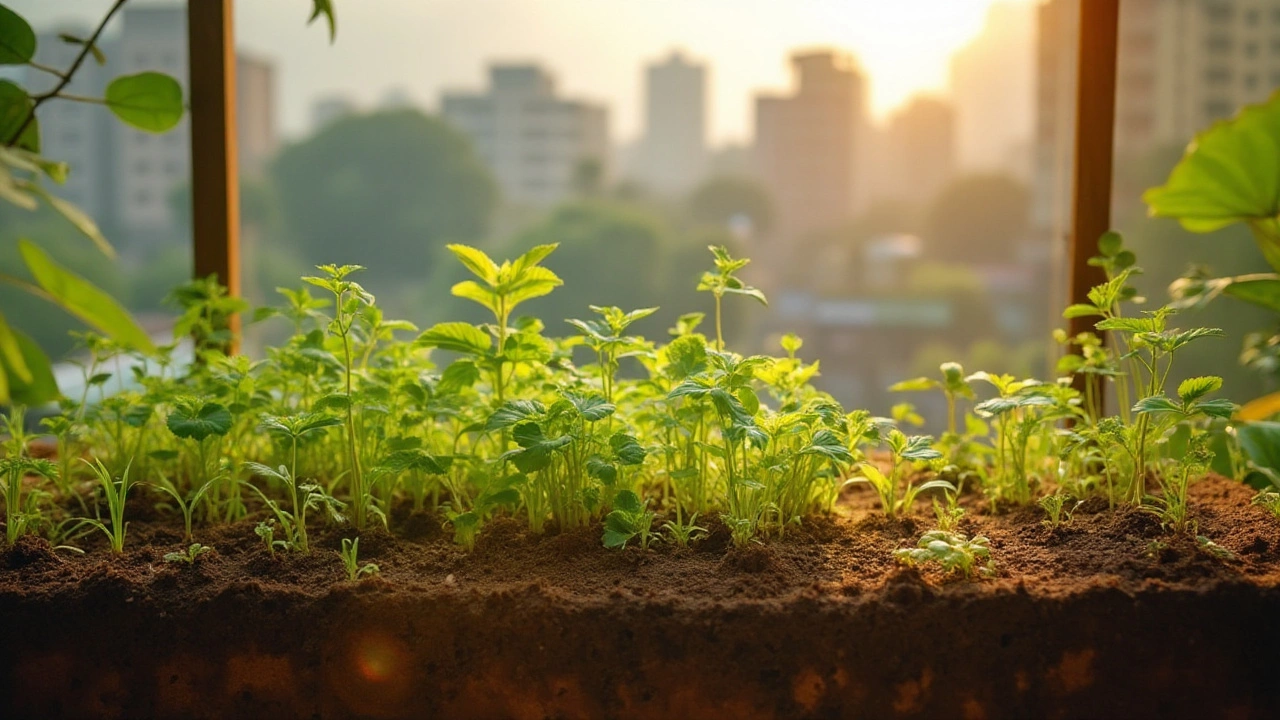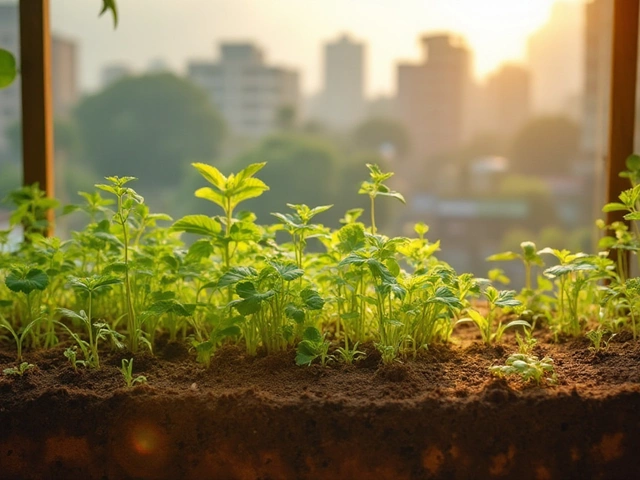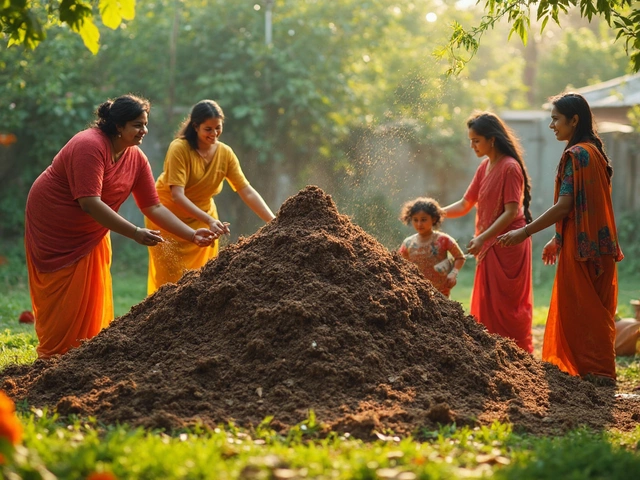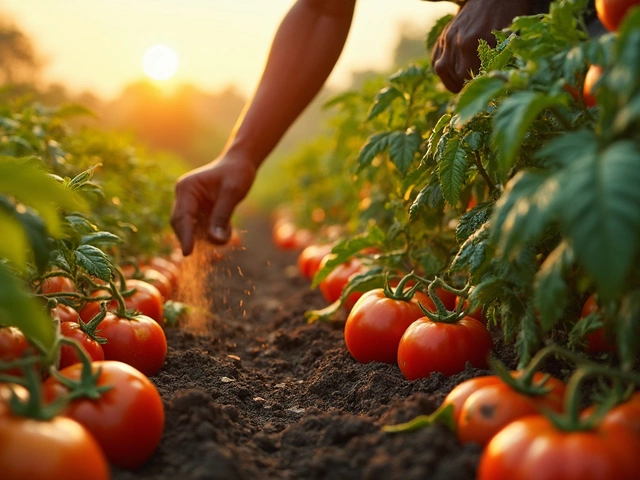If you're setting up a raised garden bed for the first time or looking to revitalize an old one, selecting the right material for the base is vital. This choice can influence not just how healthy your plants are, but also how much maintenance your garden requires over time. Let's dive into what can be placed at the very bottom and why these choices matter.
It might seem easy just to throw in a few rocks, but the truth is, there are plenty of other things that can be even more beneficial. From organic materials like straw and wood chips, which help with drainage, to using old newspapers and cardboard to ward off weeds while breaking down naturally over time, each choice has its perks.
Considering sustainability? You might think about incorporating recyclable items, which can not only enrich the soil as they break down but are also an eco-friendly option. Whatever you decide, remember that the base of your raised bed sets the tone for everything that grows above it.
- Importance of Raised Garden Bed Bottoms
- Organic Options for Drainage
- Recycled Materials for Sustainability
- Incorporating Nutrient-Rich Layers
- Dealing with Pests and Weeds
- Maintaining Soil Health Over Time
Importance of Raised Garden Bed Bottoms
Creating a successful garden lies not only in what's above the soil but also in what you place at the bottom of your raised garden bed. This foundational layer plays a vital role in ensuring the health and vitality of your plants. When you think about it, the decisions you make regarding this base layer can directly affect drainage, root health, and even pest control. Imagine setting up a raised garden bed without giving a thought to what's underneath; it wouldn't be long before you'd start facing issues, whether it's water-logged roots or an invasion of garden pests. By reinforcing your bed with the right materials, you pave the way for a flourishing, sustainable garden.
Using organic materials like straw, leaves, or wood chips serves as a natural conduit for water drainage. These materials gradually break down, adding essential nutrients back into the soil, which your plants can feast on. This is where the secret to a thriving raised garden bed lies; ensuring your plants have access to all they need right from the get-go. You don't want excess water sitting at the base, suffocating roots. Efficient drainage means that water is absorbed and distributed as needed, fostering a healthier ecosystem for your plants.
As Rosemary Williams, a noted horticulturist, says, "The base layer of your raised garden bed is akin to the foundation of a house. It supports, nurtures, and contributes to growth. Ignore it at your peril."Another essential function of a well-constructed base layer is its role in suppressing weeds. By laying down overlapping sheets of cardboard or multiple layers of newspaper, you create a barrier that stifles any weed growth, allowing your chosen plants to thrive without competition. These materials break down naturally, enhancing the soil texture and inviting beneficial organisms like earthworms, which further bolster soil health. Who would've thought that a simple stack of last week's newspaper could double up as an excellent gardening tool?
Handling pests is another significant advantage of proper base preparation. Certain materials, such as wood chips from cedar or pine, emit natural oils that deter many garden pests. They not only boost the garden soil surroundings but actively work against unwanted guests that may threaten your garden's success. When planning, consider what's native to your region and the pests you're likely to encounter, then choose base materials with these deterrent properties in mind.
| Material | Benefit | Time to Decompose |
|---|---|---|
| Straw | Great drainage, adds nitrogen | 6-12 months |
| Wood Chips | Suppresses weeds, increases airflow | 1-2 years |
| Leaves | Rich in nutrients, improves soil structure | 6-12 months |
The bottom layer of your raised garden bed isn't just an afterthought; it's an integral part of gardening strategy. By choosing the right materials, you're not just supporting your current season but laying the groundwork for future harvests. Every successful gardening venture starts with a solid foundation. Investing time and care in this initial step ensures a bounty of produce and flourishing blooms, season after season. Remember, while it's tempting to think of growing as solely what happens above the ground, true growth begins below the surface.
Organic Options for Drainage
In the world of gardening, ensuring proper drainage in raised garden beds is critical. One of the most natural and eco-friendly ways to achieve this is by using organic materials that are both functional and beneficial for the soil. These materials not only provide excellent drainage but also contribute to the overall health of your garden bed. One of the most commonly used organic options is straw, which provides an airy layer that allows excess water to seep through easily while retaining some moisture for the roots above. Straw decomposes over time, enriching the garden soil with valuable nutrients that support plant growth.
Another fantastic organic choice is leaves, especially in the autumn when they are abundant and free for the taking. Collected leaves can create a loose and sponge-like layer at the base of your raised garden bed. This layer not only aids in drainage but also adds organic matter that helps improve soil structure as it breaks down. It's a win-win! Just be sure to avoid leaves that might harbor diseases, like those from walnut trees, which could negatively affect other plants.
Wood chips offer an excellent option for drainage as well. They provide a sturdy layer capable of handling heavy rains without compressing into a soggy mess. Many garden experts recommend using aged wood chips, as fresh ones can leach nitrogen from the soil. Urban gardeners might find wood chips at local parks or community garden centers, adding ease to their preparations.
"Using organic material at the bottom of your raised garden beds can mimic a natural forest floor's rich ecosystem," notes Emma Dickinson, a renowned horticulturist. "This not only aids drainage but also builds a foundation for a thriving garden ecosystem."
Compost is another material worth considering for layering at the bottom of your raised bed. While primarily used to improve soil fertility, its loose composition makes it an excellent drainage medium. If you have a backyard compost bin, this could be an excellent way to use up some of that material and keep everything in your garden circle flowing smoothly.
Gardeners who prefer a minimalistic approach can even layer their raised beds with grass clippings. These are perfect for absorbing excess moisture, significantly reducing compaction and providing nutrients as they decompose. Although less durable than other organic options, their availability means frequent replenishment is no hardship.
Finally, let’s not forget about cardboard and newspaper, often used by organic gardeners as suppressants. While they primarily serve to block weeds, these materials also create a temporary drainage layer as they slowly decompose. Laying them at the very base can help prevent stubborn weeds from creeping into your raised garden bed while still allowing excess water to filter through.
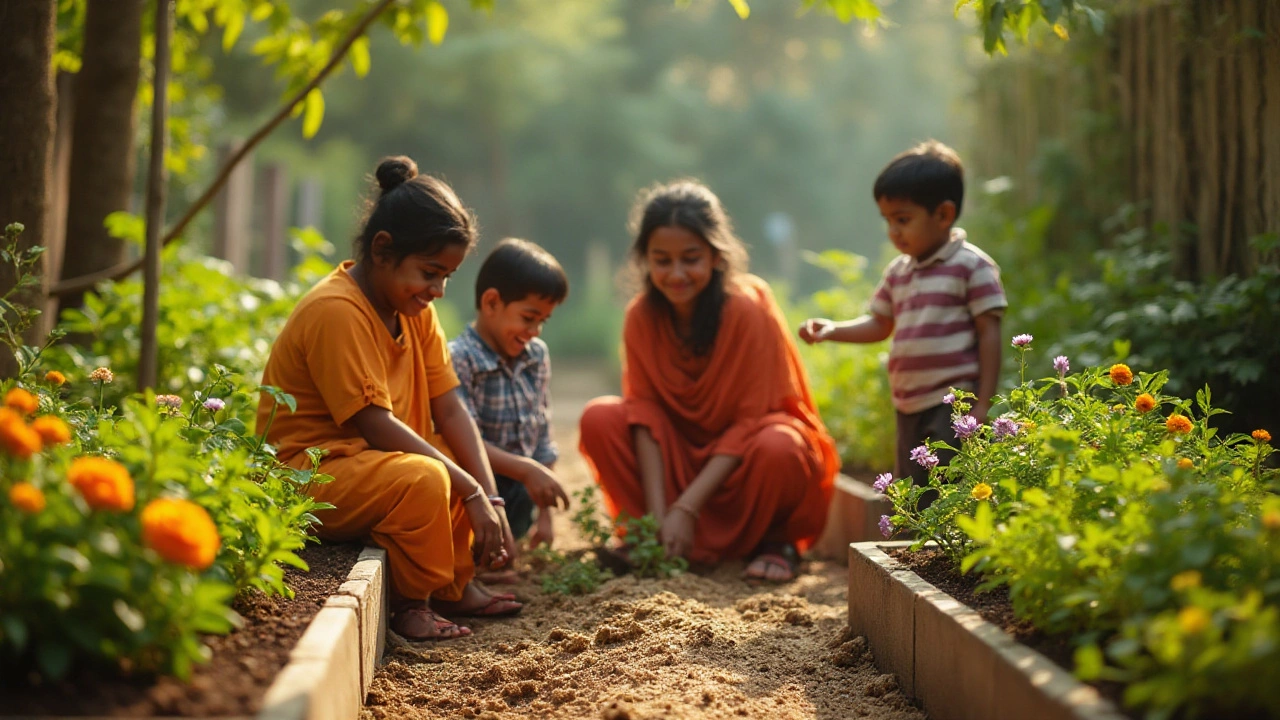
Recycled Materials for Sustainability
Using recycled materials in the foundation of your raised garden bed not only supports environmental sustainability but also contributes to a healthier garden ecosystem. Many gardeners are turning towards eco-friendly practices to enhance their green spaces, and you can too by incorporating common household items that would otherwise end up in landfill. These materials provide a balance of practicality and environmental consideration, adding a touch of creativity to your gardening experience.
One popular option is newspapers, which can be laid thickly at the bottom of the garden bed. As they decompose, they help to retain moisture while minimizing weeds. Be sure to use only black and white print to avoid harmful chemicals found in colored inks. Cardboard is another excellent choice; remove any plastic tape and lay it flat, as it's effective for suppressing weeds and adds carbon to the soil as it breaks down. This biodegradable layer creates a perfect base for nutrient-rich soil layers above.
Plastic-free milk cartons and toilet paper rolls can be strategically placed to promote airflow and drainage. They decompose slowly, ensuring long-term benefits. Moreover, shredded paper can be added as filler material, breaking down over the course of a growing season, and providing a slow release of nutrients. In an interview with horticulture expert Christine Fisher, she mentioned,
"Using recycled products in the garden bed is an innovative way to recycle household waste and enhance soil fertility simultaneously."
It’s not just about recycling paper products; consider using natural fabric scraps and old clothes. Pure cotton or wool items can be cut into pieces and scattered at the base. These fibers gradually add nitrogen to the growing medium as they biodegrade. For those looking to increase microbial activity and organic matter in their garden, spreading aged wood chips and sawdust is an excellent approach. While caution should be taken not to disturb soil nitrogen levels, incorporating these materials ensures a slow breakdown, which feeds your garden bed over several seasons.
To get a better idea of how these materials interact and affect the environment, here's a quick comparison of decomposition times:
| Material | Decomposition Time |
|---|---|
| Newspaper | 6 weeks to 4 months |
| Cardboard | 3 months to 2 years |
| Pure Cotton | 5-12 months |
| Wood Chips | several years |
Incorporating recycled materials is not only sustainable but offers a layered structure that promotes efficient drainage, pest control, and improved soil quality. With careful selection and placement, each recycled item enhances the garden's vitality while tackling waste, making you not just a gardener, but a true steward of nature. Embracing these practices creates not only better garden soil but cultivates mindfulness about the resources we consume daily.
Incorporating Nutrient-Rich Layers
Building a raised garden bed isn't just about assembling a frame and filling it with soil. To truly create an environment where plants flourish, it’s important to consider what lies beneath the surface. Incorporating nutrient-rich layers at the bottom of your bed can significantly enhance plant growth and soil health. In essence, it’s like giving your garden bed a buffet of nutrients, neatly tucked away at the roots where they’re most needed.
Start by selecting organic materials that naturally decompose over time, enriching the soil with vital nutrients. Materials like compost, well-rotted manure, and even kitchen scraps such as vegetable peelings can serve as the foundation of these nutrient-rich layers. This is not only a cost-effective way to boost the nutrient profile of your bed but also an environmentally friendly option that encourages waste recycling. Layer these materials about four inches deep. As they break down, they’ll slowly release nutrients into the soil, feeding your plants continuously.
An intriguing method to further enhance nutrient availability is through lasagna gardening. This method involves layering green and brown organic matter, akin to the layers in a lasagna, hence the name. The green layer can consist of fresh grass clippings, while the brown layer can include dried leaves or straw. This approach heats up the soil as it decomposes, killing off any potential pests or weed seeds. As Barbara Damrosch, a well-respected gardening expert, once said, "A good gardener always plans ahead." Indeed, planning your garden bed’s nutrient layers can lead to bountiful crops.
Another option to enrich your layers is by incorporating biochar, a stable form of charcoal that effectively holds and releases nutrients. Studies have shown that using biochar in garden beds can improve plant yield by up to 20%. Coupled with compost, biochar not only bolsters nutrient content but also aids in moisture retention, a critical factor during dry seasons. Remember, by strategically planning and layering these materials at the bottom of your raised garden bed, you're not just laying down the foundation of soil, but crafting a rich, nurturing environment where plants can thrive naturally.
Raised garden beds are not an island; they are a microcosm of nature’s system working collaboratively. Choosing and placing the right nutrient mediums helps mimic a natural environment that supports plant health throughout its lifecycle. By thoughtfully incorporating these nutrient-rich layers, you set the stage for a lush, productive garden. So take your time to gather the right materials, layer them methodically, and watch your garden transform into a thriving oasis.
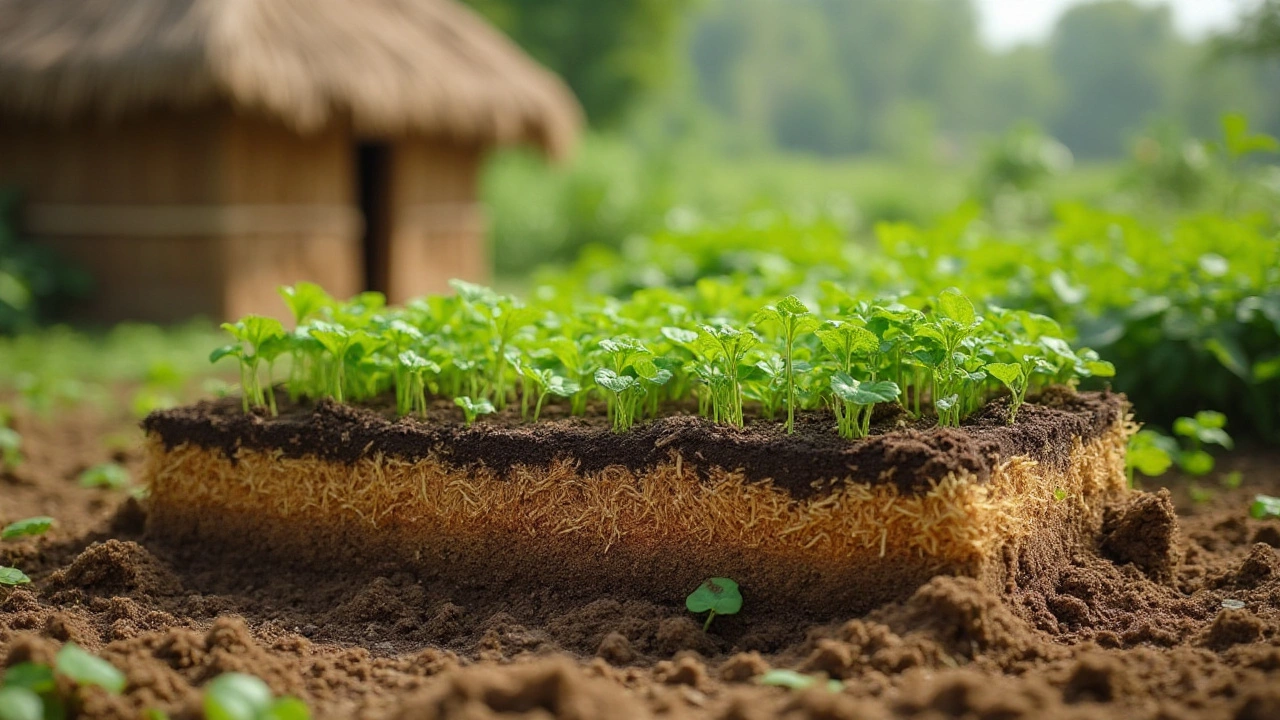
Dealing with Pests and Weeds
Gardening in raised beds can offer a multitude of benefits, but managing pests and weeds remains a central concern. Fortunately, thoughtful design and a strategic approach to building the bottom layers of your raised garden bed can significantly mitigate these issues. By incorporating defensive layers starting at the bottom, you create an environment that deters both pests and unwanted plant life from disrupting your growth efforts. This preventative measure can save gardeners both time and frustration.
One of the most effective barriers against pests is using a layer of hardware cloth or landscape fabric. Sized correctly to fit your garden bed, this cloth acts as an impenetrable shield that prevents burrowing pests like voles, moles, and gophers from accessing your plant roots from below. While it allows for excellent drainage, it also simplifies maintenance work. There's a sense of reassurance knowing that these critters can't attack your plants unseen.
Above this metal mesh layer, you can lay down cardboard or thick layers of newspaper. These biodegradable options serve multiple purposes—they're effective at preventing weeds by blocking sunlight, yet porous enough to allow water and nutrients to permeate your garden soil. Over time, they'll break down organically, contributing to your soil's nutrient content. According to Julie Moir Messervy in her book "Outside the Not So Big House," using layers of recycled materials not only combats weeds efficiently but fosters a harmonious environment of plant life.
Incorporating a diversity of mulch can add additional layers of protection. This technique is immensely beneficial because it smothers germinating weeds and retains soil moisture, which is essential during the hotter months. Organic mulches like wood chips or shredded leaves create a physical barrier that suppresses weed growth. A study published in the Journal of Environmental Horticulture indicated that mulching with wood chips reduced weed biomass by 90% compared to non-mulched areas, a testament to the effectiveness of this method.
However, sometimes it pays to think beyond the standard solutions. We might benefit from considering companion planting as a dynamic strategy to naturally repel pests. Plants like marigolds and nasturtiums don't just add beauty to your garden, but they also emit scents that deter nematodes and aphids. Interspersing these throughout your garden bed can create a natural protective network, enhancing the resilience of your main crops.
Furthermore, pests such as aphids and beetles can be controlled by encouraging predator species. Consider including plants that attract beneficial insects like ladybugs, which are voracious consumers of harmful pests, into your garden bed design. By utilizing these biological methods, you embrace a more ecosystem-friendly approach that enhances the biodiversity and sustainability of your raised garden bed.
Maintaining Soil Health Over Time
Keeping the soil in your raised garden bed healthy is an ongoing task, but it doesn't have to be overwhelming. Over time, soil can become compacted, nutrients may be depleted, or pests might settle in. To prevent these issues, it's crucial to incorporate good practices that ensure the soil remains fertile and full of life season after season. A well-maintained garden bed not only provides a better environment for plant growth but also reduces the amount of effort needed to keep your garden thriving.
Regularly adding organic matter is a fundamental practice. Compost is a gardener's best friend when it comes to maintaining soil health. Not only does it improve soil structure, but it also introduces beneficial microbes and nutrients that plants need. Aim to add a few inches of compost to your raised garden bed every season to replenish what your plants have used. Another strategy is rotating crops; different plants draw varying nutrients, so changing plants each season helps prevent specific nutrient depletion.
Another technique involves using cover crops during the off-season. These plants, such as clover or rye, are grown not for harvest but to enrich soil health. Cover crops can fix atmospheric nitrogen into the soil naturally, breaking down to provide a natural fertilizer as they decay. This method not just enhances soil fertility but also helps protect it from erosion, especially during rainy or windy months.
Water management is also a key aspect. Soil that remains waterlogged can suffocate plants and encourage root rot or fungal infection. Using mulch can help conserve moisture evenly while protecting the soil surface. Apply a layer of organic mulch such as straw or wood chips a few inches deep. Ideal mulch regulates temperature, retains much-need water, and decomposes over time to contribute additional nutrients.
As famous gardener and author Eliot Coleman said, "Soil that's alive with organisms is the absolute foundation of plant health, and the key to low-maintenance gardening." Respecting this balance can yield significant rewards in plant vigor and productivity.
Proper monitoring and testing for the soil are equally essential. Soil tests every two to three years can inform you about pH levels and nutrient content, guiding you in making smart supplementation choices. Lime, for instance, can help balance pH if your soil is too acidic, while greensand supplies essential micronutrients often lacking in commercial fertilizers. A small investment in testing can prevent over-reliance on synthetic fertilizers.
To summarize, focus on organic methods and allow nature to assist with maintaining the balance. By paying attention to the above practices, not only do we ensure a healthy raised garden bed full of life, but it also spells success in every planting season. Practicing mindful and consistent care of your garden soil doesn't just grow plants; it nurtures an ecosystem that thrives below the surface.
